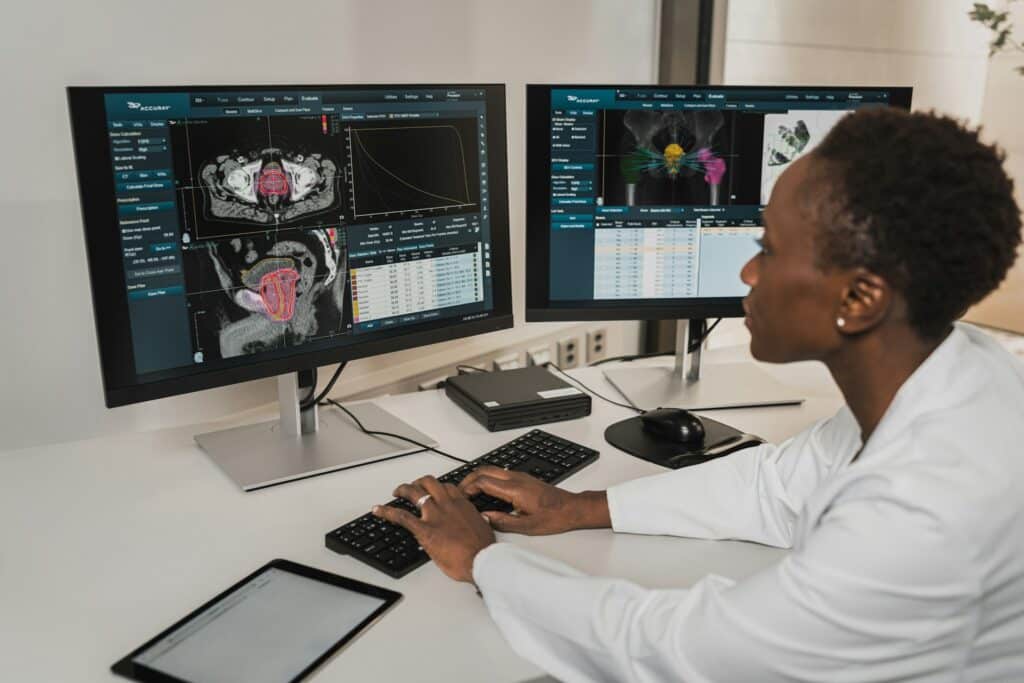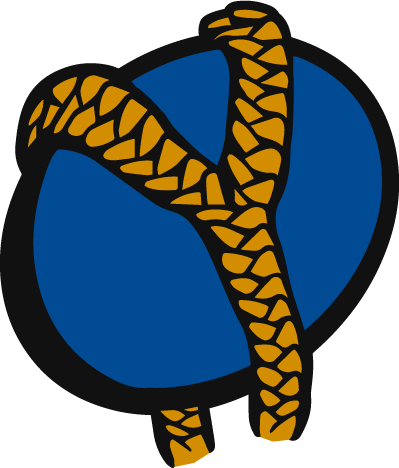If you need a web application with an embedded DICOM viewer, please contact us at info@zlynger.com
Advancements in medical imaging technology have revolutionized the way healthcare professionals diagnose and treat patients.
However, managing and accessing these vast amounts of medical images can be a daunting task.
That is where web-based applications with an embedded DICOM viewer comes in.
This powerful combination not only simplifies medical imaging workflows but also enhances collaboration and improves patient care.
In this article, we will explore the features, benefits, and real-world applications of web platforms with integrated DICOM image viewers.
The Role of Web Applications in Healthcare
In medicine, a web-based application is a digital tool that allows researchers and healthcare professionals to collect, manage, and analyze clinical trial data electronically.
It improves communication and eliminates the need for paper-based data collection methods, reducing errors and improving efficiency.
Web-based software provides a centralized platform for data entry, storage, and analysis, making it an indispensable tool in clinical research and healthcare settings.
Understanding the DICOM Standard
Digital Imaging and Communications in Medicine (DICOM) is the standard format used for storing, managing, and transmitting medical images.
It ensures compatibility and interoperability between different imaging devices and software applications.
DICOM files contain not only the image data but also patient information, study details, and other relevant metadata.
This standardized format enables seamless integration and exchange of medical images across various systems and platforms.
The Power of Combining Web Platforms and DICOM Viewers
Combining web applications with a DICOM viewer brings several advantages to medical imaging workflows.
Let’s explore some of the key features and benefits:
1. Streamlined Data Capture and Image Management
Web platforms that incorporate DICOM viewers unify clinical data collection and medical image management.
These tools allow healthcare professionals to directly enter data and upload DICOM images into an electronic database, avoiding manual data collection and physical shipments of CDs or portable storage devices like pen drives.
Then, the clinical information and the related images are stored in a structured and searchable format.
This streamlines medical data and image management and retrieval, saving time and reducing the risk of errors.
2. Seamless Integration with Existing Systems
Web-based platforms with a DICOM viewer can be integrated into existing healthcare systems.
These platforms can be easily integrated with Picture Archiving and Communication Systems (PACS) and Radiology Information Systems (RIS), enabling healthcare professionals to access and view DICOM medical images directly from the web platform interface.
This integration eliminates the need for switching between different software applications, enhancing workflow efficiency and improving patient care.
3. Collaboration and Remote Access
Web applications with a DICOM viewer facilitate collaboration among healthcare professionals, researchers, and radiologists.
They allow authorized users to securely share and access medical images, regardless of their geographical location.
This feature is particularly beneficial in multi-site clinical trials and telemedicine applications, where remote access to medical images is crucial.
With a DICOM viewer embedded in a web platform, healthcare professionals can collaborate in real-time, share insights, and make informed decisions based on the available medical imaging and related data.
4. Advanced DICOM Image Viewing and Analysis Tools
One of the key benefits of using web platforms with a DICOM viewer is the availability of advanced image viewing and analysis tools.
DICOM viewers provide a comprehensive set of tools for image manipulation, measurement, annotation, and comparison.
These tools enable healthcare professionals to accurately interpret medical images, make diagnoses, and monitor treatment progress.
The integration of DICOM viewers within the web platform interface eliminates the need for additional standalone image viewing software, further streamlining workflows.
5. Enhanced Data Security and Compliance
Data security and compliance are of utmost importance in healthcare settings.
Web applications with DICOM viewers ensure the privacy and integrity of patient data by implementing robust security measures.
These may include user authentication, role-based access controls, encryption of data in transit and at rest, and audit trails.
Additionally, these software solutions must comply with industry standards and regulations, such as HIPAA and GDPR, to safeguard patient privacy and ensure data confidentiality.
Real-World Applications
The combination of web-based software with a DICOM viewer finds applications in various healthcare settings.
Let’s explore some real-world scenarios where this powerful combo can make a significant difference:
1. Clinical Trials
Clinical trials involve the collection, management, and analysis of vast amounts of data, including medical images.
Electronic Data Capture (EDC) software with a DICOM viewer simplifies the data and image collection process, ensuring accurate and efficient data management.
It also enables real-time collaboration among researchers, radiologists, and other stakeholders, facilitating faster decision-making and improving trial outcomes.
2. Telemedicine
Telemedicine allows healthcare professionals to remotely diagnose and treat patients using telecommunication technologies.
Web platforms with a DICOM viewer play a fundamental role in telemedicine applications by providing remote access to medical images.
Healthcare professionals can securely view and interpret medical images, make diagnoses, and provide timely treatment recommendations, regardless of the patient’s location.
3. Radiology Departments
Radiology departments heavily rely on medical imaging for diagnostics and treatment planning.
Customized web applications with a DICOM viewer streamline radiology workflows by centralizing medical image data, enhancing collaboration among radiologists, and providing advanced image viewing and analysis tools.
This leads to improved workflow efficiency, faster report turnaround times, and enhanced patient care.
4. Research Institutions
Research institutions conducting imaging studies can benefit from custom web-based applications with a DICOM viewer.
These solutions simplify the data collection process, reduce errors, and enable seamless integration between clinical study data and medical images.
Investigators can access, view, and analyze medical images alongside other study data, facilitating comprehensive research and accelerating scientific discoveries.
Conclusion
Web-based tools with an embedded DICOM viewer is a powerful combination that revolutionizes medical imaging workflows.
By streamlining data capture and management, enabling seamless integration, fostering collaboration, providing advanced image viewing and analysis tools, and ensuring data security and compliance, these integrated platforms enhance efficiency, improve patient care, and accelerate clinical research.
Whether in clinical trials, telemedicine, radiology departments, or research institutions, web applications with DICOM viewers prove to be an invaluable asset in the healthcare industry.
Embrace this technology to unlock new possibilities in medical imaging and take patient care to new heights.
If you need a web application with an embedded DICOM viewer, please contact us at info@zlynger.com



